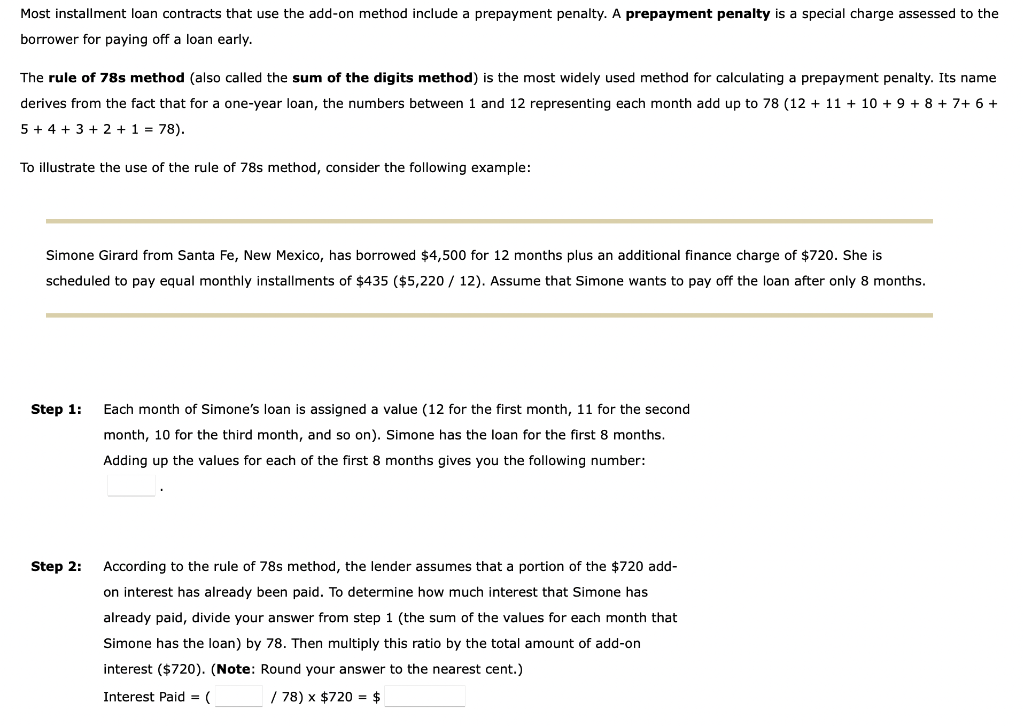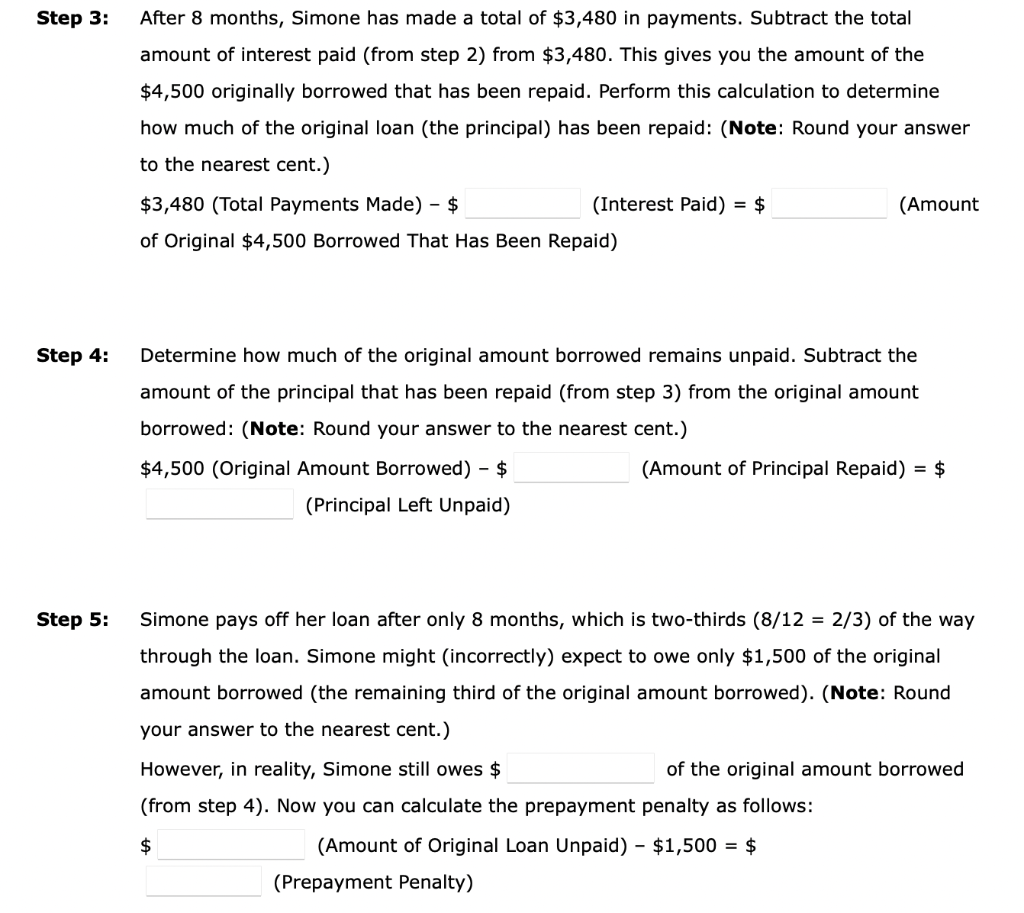

Most installment loan contracts that use the add-on method include a prepayment penalty. A prepayment penalty is a special charge assessed to the borrower for paying off a loan early. The rule of 78 s method (also called the sum of the digits method) is the most widely used method for calculating a prepayment penalty. Its name derives from the fact that for a one-year loan, the numbers between 1 and 12 representing each month add up to 78(12+11+10+9+8+7+6+ 5+4+3+2+1=78) To illustrate the use of the rule of 78s method, consider the following example: Simone Girard from Santa Fe, New Mexico, has borrowed $4,500 for 12 months plus an additional finance charge of $720. She is scheduled to pay equal monthly installments of $435($5,220/12). Assume that Simone wants to pay off the loan after only 8 months Step 1: Each month of Simone's loan is assigned a value ( 12 for the first month, 11 for the second month, 10 for the third month, and so on). Simone has the loan for the first 8 months. Adding up the values for each of the first 8 months gives you the following number: Step 2: According to the rule of 78 s method, the lender assumes that a portion of the $720 addon interest has already been paid. To determine how much interest that Simone has already paid, divide your answer from step 1 (the sum of the values for each month that Simone has the loan) by 78 . Then multiply this ratio by the total amount of add-on interest (\$720). (Note: Round your answer to the nearest cent.) Interest Paid =(/78)$720=$ p 3: After 8 months, Simone has made a total of $3,480 in payments. Subtract the total amount of interest paid (from step 2) from $3,480. This gives you the amount of the $4,500 originally borrowed that has been repaid. Perform this calculation to determine how much of the original loan (the principal) has been repaid: (Note: Round your answer to the nearest cent.) $3,480 (Total Payments Made) - $ (Interest Paid) =$ (Amount of Original $4,500 Borrowed That Has Been Repaid) Determine how much of the original amount borrowed remains unpaid. Subtract the amount of the principal that has been repaid (from step 3) from the original amount borrowed: (Note: Round your answer to the nearest cent.) $4,500 (Original Amount Borrowed) - $ ( Amount of Principal Repaid )=$ (Principal Left Unpaid) Simone pays off her loan after only 8 months, which is two-thirds (8/12=2/3) of the way through the loan. Simone might (incorrectly) expect to owe only $1,500 of the original amount borrowed (the remaining third of the original amount borrowed). (Note: Round your answer to the nearest cent.) However, in reality, Simone still owes $ of the original amount borrowed (from step 4). Now you can calculate the prepayment penalty as follows: $ (Amount of Original Loan Unpaid) $1,500=$ (Prepayment Penalty)








